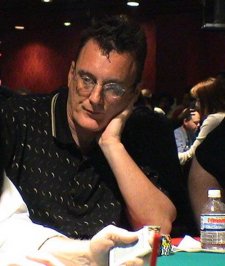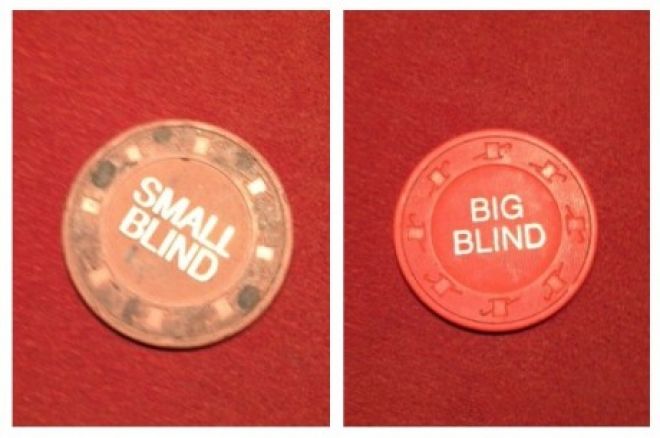Texas Holdem Poker Small Big Blind
There are mainly two blinds in Texas Holdem – the big and small blind, but there can sometimes be three players who have to make them. The name comes from the fact that players are being asked to bet without seeing their hands. They are betting blind, with no knowledge of the hand’s worth. A lot of places you have to come in on a big blind in cash games (tournaments you never miss a blind). You can typically wait for the blind to reach you or post a big blind to get a hand, you can post whenever you would like. You can let the blinds pass and post in position behind the button.
- Texas Holdem Poker Small Big Blind Dogs
- Texas Holdem Poker Small Big Blind Free
- Texas Holdem Poker Small Big Blinds
In Texas Hold’em, the person who starts or goes first is dependent on what stage of the hand being played. Before the flop, the first person to act is the player seated directly to the left of the Big Blind. This seat is often referred to as Under The Gun (UTG). After the flop, the first person to act is the player seated in the Small Blind (SB) position. Thereafter, the order stays the same for the rest of the hand through the Flop, Turn, and River.
What Is the Exact Order of Play?
The order of play is based on how the players are seated at the table. There are typically 6 seat names in poker. UTG (also known as first position) is divided up into multiple seats (UTG, UTG+1, UTG+2) for games larger than 6-handed.
Here is what a 6-max poker table looks like. In the chart, the seats are called Under The Gun (UTG), the Hijack (HJ), the Cutoff (CO), the Button (BTN), the Small Blind (SB), and the Big Blind (BB).
Pre-Flop Order
Before the flop, the last player to act is always the Big Blind.
On a 6-handed table, the order of play would be UTG, HJ, CO, BTN, SB, BB. Once the first player acts, play continues around the table in a clockwise fashion until it reaches the Big Blind, who acts last on the first round.
On a 9-handed table, the order of play would be that the UTG starts followed by UTG+1, UTG+2, UTG+3, HJ, CO, BTN, SB, BB.
Post-Flop Order
On the Flop, Turn, and River, the last player to act is always the Button.
Accordingly, on a 6-handed table, the post-flop order of play would be the SB starts followed by the BB, UTG, HJ, CO, and BTN.
Are There Any Exceptions?

The post-flop order never changes. However, the pre-flop order of play can be slightly altered if there is a player who straddles. A straddle is when the player seated just to the left of the Big Blind (usually UTG) posts a double big blind bet in front of him prior to the cards being dealt.
Essentially, he is buying the right to act last before the flop. In the case of a straddle, the person seated just to the left of the “straddler,” goes first pre-flop once the straddle has been wagered.
What Is the Dealing Order?
The first person to act after the flop is also the first person to receive a card; the small blind. The easy way to remember this is that the dealer must always deal clockwise to his or her left.
Who Goes First in Heads-Up Play?
The pre-flop order also changes in a heads-up match. Instead of the Button acting last before the flop, he or she acts first instead. The easy way to remember it is that the Big Blind always goes last before the flop. And, in the case of heads up, the Button is the Small Blind, and therefore acts before the Big Blind player.
During post-flop, nothing changes heads up. The button still acts last, even though technically he or she is the Small Blind.
Dealing Order For Heads-Up Play
In heads-up play, the Big Blind is dealt to first and the Button 2nd. The button always receives the last card when dealing no matter how many players are seated at the table.
What’s the Order of Play Three-Handed?
The same rules apply whether there are 3 players or 10. Before the flop, the player to act first is just to the left of the big blind. In the case of three-handed play, that would be the button. After the flop, the small blind acts first as always.
Who Bets First?
After the flop and before action is opened, any player can perform one of two actions. They can either bet or check. Of course, the person who acts first has the first option to bet.
When Does a Poker Hand End?
There are a couple of ways that a poker hand can end. First, someone can bet and all the other players fold. This can happen on any street. The second time a hand can end is when the action closes on the river and showdown is achieved. In the latter case, all live hands are revealed and the winner is determined.
Who Shows Their Cards First at Showdown?
Once the hand has ended on the river and showdown has been achieved, the order that each player reveals their hand is exactly the same as the post-flop betting order. The first person to reveal is always the first person to the left of the Dealer and the last person to reveal is the player on the button.
Of course, if a player only has to show their hand if they want to. Many players will choose to “muck” or throw away their hand instead of showing if they are sure they have no chance of winning the hand at showdown. This is sometimes a wise choice in order to not give away information about your hand.
Is It Better to Act First or Last?
Being in position (acting last) is much better than being out of position (acting first) in poker. Poker is an informational game and the person that gets to act last has more information than everyone else. I wrote a detailed article on position; check it out for more details.
What Is the Best Position at a Poker Table?
Since we have established that acting last is most advantageous in poker, the Button would be the best seat at the table. However, in reality, the seat name is irrelevant, as long as you are acting last. Therefore, let me refine my definition slightly: the best seat in poker is any seat that has you acting last in the current hand on the current street. For example, if it is blind versus blind after the flop, then the player in the Big Blind has the best seat possible for that hand.
Why Is It Called the Dealer Button?
When poker began the players had to deal the cards. In order for everyone to get equal opportunity to share the burden of dealing, the moving dealer button was born. Today, in casinos and even in some home games, there are dedicated dealers to speed up play, enforce the rules, and lessen the likelihood of cheating.
Why Do the Blinds Act Last Before the Flop?
The exact reason that the blinds act last before the flop has been lost to history. However, one could deduce that the reasoning is simple. Since the blinds are the only players to pay to play a particular hand, it only makes sense that they should be rewarded by being given an informational advantage via acting last. This theory is bolstered by the existence of “straddles” where one can essentially “buy” position before the flop.
Who Goes First in Pot Limit Omaha?
There is no difference between Texas Hold’em and Pot Limit Omaha (PLO) when it comes to the order of play. In fact, the order of play is the same for every poker game that has two blinds and a dealer button.
The SB is unfortunately one of the least profitable places to be at the table. We are forced to give up a mandatory 0.5bb without even seeing our hole cards, and are guaranteed to always be out-of-position postflop!
BB vs SB
- Big-Blind – Flat wide and 3bet aggressively.
- Small-Blind – Flat Tight and 3bet aggressively.
- 1) We have invested less money in the SB and don’t get as good of a price to call.
- 2) We do not close the action in the SB. The BB may squeeze or overcall.
Raise First In
Defending vs Opens
SB vs BTN 2.5x
- Light-Red – 3bet for value
- Dark-Red – 3bet bluff
- Dark-Blue – cold-call
- Green – Mixed Strategy (Sometimes call, sometimes 3bet)
SB vs CO 3x
SB vs MP 3x
SB vs UTG 3x
Iso-Raising/Completing
- Red – Iso-raise for value
- Blue – Complete
- White - Fold

HU Completes
- Light red – Limp/Raise for Value
- Dark Red – Limp/Raise as a bluff
- Dark Blue – Limp/Call
- Light Blue – Limp/Fold
- White – Open Fold
- Green – Open Raise
- Light Blue – Limp/Fold
Squeezing and Overcalling
- Light Red – Value Squeeze
- Green – Mixed strategy – Both Overcalling and Squeezing are fine
- Dark Blue – Overcall
- Dark Red – Bluff squeeze
Texas Holdem Poker Small Big Blind Dogs
- Position of the opener
- Position of the caller
- Tendencies of the raiser and caller
- The size of the open-raise
- Tendency of the BB
 However, assuming the BB is passive we can expand our overcalling range and follow a very similar strategy to the one that we would typically use in the BB when facing multiple opponents.
However, assuming the BB is passive we can expand our overcalling range and follow a very similar strategy to the one that we would typically use in the BB when facing multiple opponents.Texas Holdem Poker Small Big Blind Free
Putting it Together
- Aggressively steal against opponents who don’t defend their big-blind
- Flat a very tight and sparing range in general
- 3bet aggressively vs LP opens but very tight vs EP opens
- Consider employing a completing strategy when relevant
- Understand when to overcall/squeeze
Other Top Recommended Content
If you enjoyed reading this article, check out our other top recommended articles by Adam Jones!- How to Get in the Zone and Play Your Best Poker
- Live Poker Tells and How to Mask Them
- Micro Stakes - Floating & Exploiting
- Bitesize Training: EV Calculations